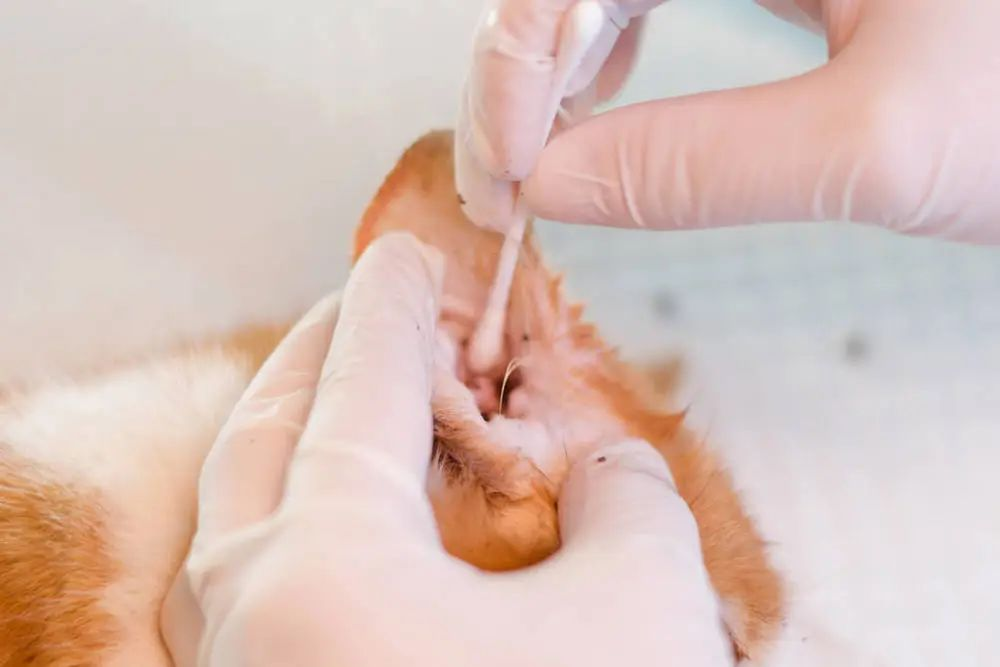

Jul. 23, 2025

Under the cute appearance of cats, there are some small troubles that may threaten their health, and ear mites are one of them. As a common ear canal problem in cats, ear mites not only cause discomfort, but may also lead to a series of health hazards. Today, let's delve into cat ear mites, master coping strategies, and protect the health of cats.
Ear mites, scientifically known as ear itch mites, are tiny ectoparasites that mainly parasitize the skin surface of cats' external auditory canals. These little ones feed on the skin residue and tissue fluid in the cat's ear canal. Although it is difficult to see their figures directly with the naked eye, the problems they cause cannot be ignored. More than half of external ear infections in domestic cats are caused by ear mites, which can have a significant impact on the health of their ears. The growth cycle of ear mites is about 21 days, and after developing from eggs to adults, they have the ability to mate and lay eggs. Their lifespan is about 2 months, which allows them to reproduce rapidly in suitable environments, causing sustained trouble for cats.
When cats are troubled by ear mites, they will send out "distress signals" through some behavioral and physical changes. The following signs may indicate that cats are infected with ear mites:
Frequent scratching of ears: Cats will constantly scratch their ears with their hind paws, even rubbing their ears around in an attempt to relieve itching. Sometimes they also frequently shake their heads, which is a sign that they are trying to get rid of the discomfort in their ears.
Ear redness and swelling: Upon careful observation, it can be observed that the skin inside and around the cat's ears is red and swollen, which is the result of ear mites stimulating the ear canal and causing inflammation.
Dark substances appear in the ear canal: Black brown or dark wax like or debris like substances resembling coffee grounds appear in the ear canal, which is a typical symptom of ear mite infection. These substances are actually a mixture of ear mite excrement, secretions, and exudate produced by skin inflammation.
Ear odor: When approaching a cat's ear, an unpleasant odor can be smelled, which is also caused by the proliferation of ear mites in the ear canal, leading to inflammation.
Thickening of ear skin: Long term exposure to ear mite infection can cause the skin on cats' ears to gradually become rough and thickened, which is a self-protection response of the skin under continuous inflammatory stimulation.
Hearing impairment: In severe cases of ear mite infection, cats' hearing may be affected, and their response to their owners' calls may become sluggish or even turn a blind eye.

Preparation materials: Ear wash (cleaning), ear drops (mite killing), sterile cotton balls/swabs, clean tissues.
Operation method: Gently lift the cat's ears upwards and drip an appropriate amount of ear wash into the ear canal; Hug the cat tightly and gently rub the base of the ear with your fingers for about 30 seconds. At this point, you can hear the sound of "smacking" coming from the ear canal. This is because the ear wash is working to soften the dirt in the ear canal; Release the cat and let it shake the dirt out of its ear canal on its own; Finally, use a cotton ball, medical cotton swab, or clean tissue to gently dry the dirt and ear wash around the ears. Finally, drop 1-2 drops of acaricide into the cat's ear canal. It is important to note that do not use cotton swabs to dig deep into the cat's ear canal. Improper operation by non professionals can easily push pollutants deeper into the ear canal or accidentally puncture the cat's eardrum, causing more serious injuries.
Preventing ear mites is more important than treatment! In daily care, cats can have their ear canals cleaned regularly (1-2 times a week) to keep their ears dry. Avoid cats coming into contact with stray or sick cats, and check your ears promptly after going out to play. Provide more nutrition to cats, enhance their resistance, and give them a healthy body. In addition, regularly deworming cats both internally and externally is a key measure to prevent ear mites. Don't be lazy!